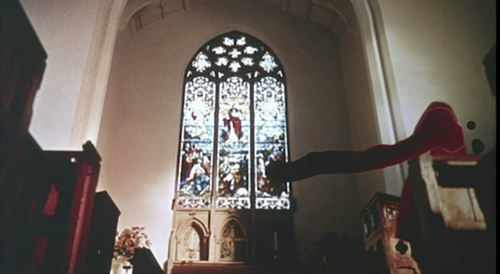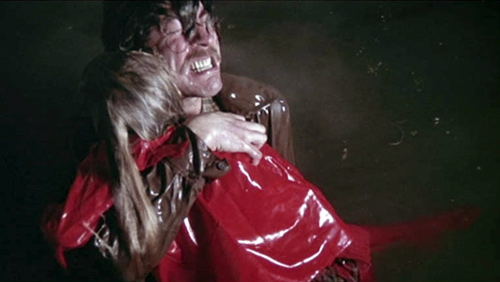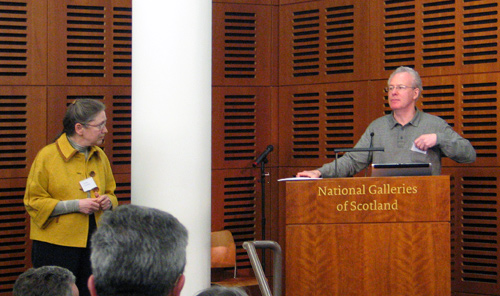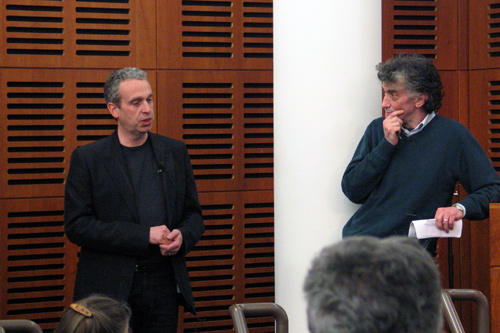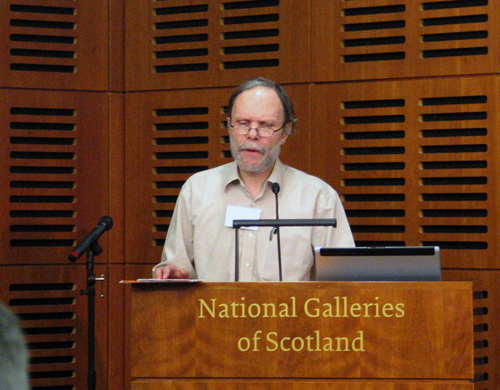The Photocinema Conference took place at Quad, Derby on March 6th as part of FORMAT 09 Festival. It took the form of a one-day symposium around the theme of the still and moving image.
The conference was sold out well before the day not least because of the varied line-up of speakers, which intelligently combined talks by practitioners with those of theorists/academics.
David Campany took the floor first and introduced the audience to a series of photocinema encounters. This included the use of a colour transparency in the opening scenes of the film Dont Look Now, (based on the Du Maurier novel) which begins to seep blood as Donald Sutherland views it on a lightbox. The sight prompts a premonition of tragedy in Sutherland, that of the drowning of his daughter, itself a premonition of the macabre events which follow.
Another powerful reference was to the shot for Victor Sjostroms 1927 film The Wind. Used as a production still, this stunning image was in fact a staged reconstruction but has exactly the energy and movement appropriate to the subject of the film.
This interplay of stillness and movement, where sometimes one medium succeeds in doing that which the other is renowned for, was the underlying thread through all the presentations that followed.
On the theme of the elements still, Martin Parr showed a wonderfully candid short on a stormy evening in one of Englands tired but chirpy coastal holiday resorts. While Victor Burgin showed the last 7 minute sequence from Antonionis LEclisse. Shot on the corner of a quiet street as the sun sets, this astonishing series of scenes in which little more happens than time passing, is a film-makers homage to stillness.
There were too many highlights for me to cover them all. Neil Campbell presented a fascinating paper on the work of Robert Frank and Wim Wenders, one a photographer whose work functioned more like a film (in long sentences said Kerouac), the other a film-maker whose films can be read as a series of stills. Donovan Wylie gave a frank account of his crisis with photography and his frustrations with film-making, both informing work which is in my opinion more engaging for the struggle. Eric Baudelaire talked of the influence of Tarkovskys Stalker in his work Imagined States (2005). Finally Rachel Moore presented Hollis Framptons 1971 film nostalgia. An important film in an art historical sense no doubt, but one which really should not be scheduled for the end of a long days listening.
All in all though this was an exciting day, both informative and inspiring, with photography shedding light on cinema and vice versa, neither loosing their magic through association. I could have done with a little more female magic in the line-up of speakers but that would be my only criticism. This is an area of intrigue for me and I had a great day watching and listening to the various pieces of an ongoing puzzle.
EJ. Major
EJ Major is an artist based in London. Her solo exhibition ‘Try to Do Things We All Can Understand’ was premeried at Street Level in April 2008, and coincided with Glasgow International. The work of the same name was also included in the FORMAT 09 festival exhibition at Quad, Derby.
